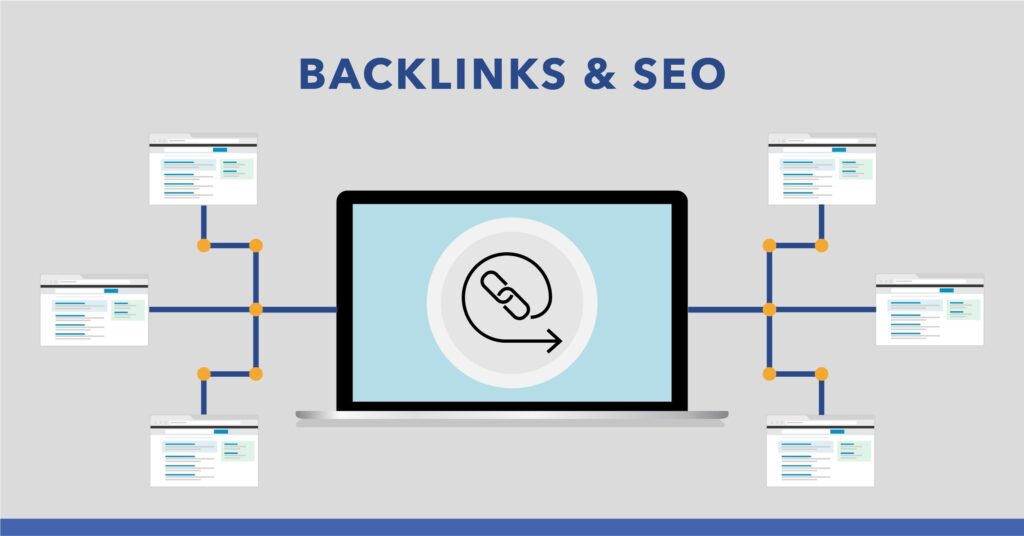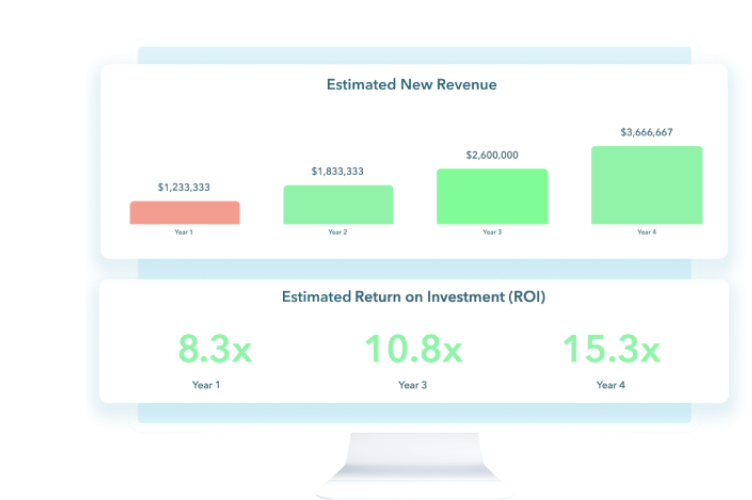 1,247 views
1,247 views 8582 Views
8582 Views  11 min read
11 min readIn Summary:
Millions of people start their day with a web search. A SEO study showed that . . .
Unless you’ve got an airtight SEO strategy in place, there’s nothing stopping users from skipping over your business and choosing a competitor instead. Every online business needs search engines to survive, and you’ll be happy to know that there’s a way to make them swing in your favor. What is that? We’ve got two words for you: organic traffic.
Organic traffic is defined as visits to your website from search engine results and not paid ads. Although some paid ads for your website can result in organic traffic, users typically find you through websites such as Google or Bing. The difference between organic traffic and those ads that you see is that organic traffic comes free of charge, while companies pay for their websites to rank high.
Although paid ads catapult your website to the top spot, the paid ad traffic stops altogether once you stop paying for them. Although paying for ads is quicker, using organic traffic to get eyes on your website is more sustainable long term.
Imagine that a user wants to search the internet for a term like “baking hacks.” They enter this term into google and are given a set of results: a mix of organically ranked pages and ads that pay to rank high. Hopefully, if you have a great SEO strategy, your page for “baking hacks” is in one of the highest-ranking spots. The user clicks on your page, and you’ve received a new visitor to your site through organic traffic.
Organic traffic is one of the best ways to drive traffic to your website because the people finding you through this method want to be there. They’ve chosen your webpage because it seems that you’ll answer their questions, or they can get the information they need from a blog post. If you prove that you’re a trustworthy source on a subject matter, you’re likely to get a long-time subscriber who comes back to your blog repeatedly.
You’re probably thinking, “This information is great and all, but what is the best way to increase organic traffic?” Don’t worry. We’re not just here to dump information. We know that improving your organic traffic is pertinent to building a solid website that can ride the waves of internet uncertainty. If you’re unsure how to improve organic search traffic, you’ve come to the right place. Here are seven ways that you can improve your organic search traffic and create an SEO-friendly website.
It’s no secret that search engines are fond of websites that regularly publish content. No one wants to sign up for a blog’s newsletter, only to find out that the last time they posted was six months ago. Regularly blogging builds trust with your readers and is arguably the best way to increase your organic traffic. With each new blog post, they find out a little more about the person behind the blog, and they get their questions answered on a topic.
However, simply sitting down and banging out 10 400-word fluff articles a week isn’t going to catapult you to the highest ranking in search results. You get out of a blog what you put in, so low-quality blog articles will have low-quality SEO results. Every article on your website should provide valuable information to users.
When people navigate to a web page, they’re hoping that they can find the answers they need within minutes, sometimes seconds. They’ll be able to tell if you’re bluffing or if you aren’t as knowledgeable on a topic as you claim to be. Another part of blogging well is to lean into long-form content that dives in deep. It may be challenging at first, but don’t give up. Those 500-word articles may be fun to pump out, but the average word length for articles ranking on the first page of Google is 1,890 words. Try replacing your 5 500 word articles a month with 1 or 2 long-form articles.
Use Google Analytics to track how they do and which pages perform better. The results will surprise you. Producing high-quality content is a vital part of your on-page SEO strategy.
Considering questions like these before you sit down to write your web page content will help you create quality, educational content for your readers.
You’re probably familiar with target keywords and use them in your existing SEO strategy to rank for specific search terms. Even so, some words are challenging to rank for no matter how hard you try. More prominent brands likely dominate the top-ranking spaces, and they’re not going anywhere soon. How can you solve this problem? We’ll tell you: long-tail keywords.
Long-tail keywords are keywords that are typically four words or more. They consist of terms with a lower monthly search volume but are very specific and have a higher chance of clicks and will improve organic traffic to your website. Many people are surprised to find out that most searches done on search engines are for very specific keywords. For example, of the 1.9 Billion keywords in the Ahrefs US database, over 92% of them get only ten searches or less per month.
As you can see, there are a whole lot of specific inquiries just waiting to be taken under your blog’s wing. Now that you know about the power of long-tail keywords, you’ll need to know how to find them. An easy and free way to look for long-tail keywords is to turn to a search engine like Google. To find narrowed down long-tail keywords for a topic, start by typing the broad target keyword into Google. Google’s fantastic autocomplete feature will kick in, and you’ll see searches related to the general topic you’re searching.
Let’s say you need to write an article on toothpaste. There are hundreds of search results for toothpaste on its own. However, if you decide to type in “best toothpaste for,” here are a few terms that come up:
Any one of these topics can be taken and expanded on even further. With each of these search queries, see what keywords are recommended to find even more ideas. You can take those keywords and change them into:
While these might not be the most riveting articles, people looking for specific answers actively search these terms. Choosing to incorporate long-tail keywords of this nature into your pieces increases your chances of climbing the rankings in search engine result pages. Although this method is free, it can be time-consuming to look up and collect each keyword on your own manually. Save time using a professional keyword research tool to help you find hundreds of long-tail keywords at the touch of a button. 
While we all focus on writing new content, sometimes the key to getting your blog on the map is your existing posts. If you want to improve organic traffic, you need to enhance and refresh your existing content. We don’t mean that you need to overhaul all your old blog posts, but updating them wouldn’t hurt. You’ve worked hard to produce high-quality blog posts, so don’t let them go to waste! Unfortunately, even the best blog posts are recognized as less “fresh” by Google, which can negatively affect the quality of your site.
So what can you do? Start by making a list of existing blog posts, and choose which posts fit best into your brand and your goals to grow a business. Once you have them all in front of you, it’s easier to choose what blog posts you should focus on to update and reshare. If you’re not sure, a quick check through Google Analytics will tell you which posts performed the best over the past year or so. One quick way to bump up your old posts is by adding internal links to relevant blog posts on your website. Some bloggers create a list of blogs that they plan on constantly linking back to, such as “Why I Started My Blog” or “Top 10 Travel Destinations in the UK.”
If these blog posts performed well initially, a few internal links would drive their traffic back up again. Although it may seem obvious, you should make it a habit to comb through old blog posts to fix spelling and grammar mistakes. How many times have you read through an old post, only to find that you dropped a comma, left off a period, or now your favorite sentence in the post sounds weird? Yeah, we know. We’ve all done it! For one blogger, fixing a few grammatical errors was able to increase his search engine placement of the page from #8 to #3!
The lesson? Don’t underestimate the power of good grammar.
When you first dip your toes into the world of on-page SEO, you’re likely wondering what on earth meta descriptions are and why you should use them. In short, meta descriptions are short HTML tags that you can customize for a post or a page of your website. These short tags describe what your page is about, which makes it easier for search engines and users to decide whether or not your post is of any benefit to them. If left blank, search engines will sometimes pull your meta description from the first few lines of text on your page. Although it’s better than leaving it blank, a solid SEO strategy would implement keywords into your meta description to catch the eyes of users.
Some people choose to skip their meta descriptions as search engines said there was no impact on the ranking algorithm. However, the clickthrough rate on Google does impact your search page ranking. One way to get more clicks on your page is to have clear meta descriptions that help people find what they’re looking for in their searches. Creating a detailed blurb doesn’t mean that you need to write a short essay for your meta description. Here are a few things to keep in mind when writing your meta descriptions:
 If you only do one thing to increase your domain authority, it should be backlinking. Simply put, backlinks are when one website links to another. These links are crucial to building your online reputation and are a critical part of your SEO strategy. There’s a famous saying that goes, “Tell me who your friends are, and I’ll tell you who you are.”
If you only do one thing to increase your domain authority, it should be backlinking. Simply put, backlinks are when one website links to another. These links are crucial to building your online reputation and are a critical part of your SEO strategy. There’s a famous saying that goes, “Tell me who your friends are, and I’ll tell you who you are.”
Your website’s reputation is affected by who you connect with online. Search engines pick up on websites that receive backlinks from other trusted sources when it comes to your online presence. When this happens, they start to view your site as trustworthy, thus improving your online ranking. Getting backlinks to your website isn’t as simple as posting links to your blog posts in the comments section of a website. Link building involves real effort on your part. Remember, you need these links to come from reputable sources online to count towards increasing your domain authority. Acquiring reputable backlinks for your website can be done in a few different ways:
Internal linking, beyond improving existing posts, significantly boosts SEO. It’s simply linking pages within your website, which creates site hierarchy and navigation that search engines recognize. Users appreciate these links, as they consolidate information.
While home pages and menus use internal links, contextual links within posts are also essential. Start by weaving these into existing pages to direct users to related content. The more internal links a page has, the more important search engines deem it. Links help search engines understand the relationships between pages and identify related topics.
However, don’t link excessively or without purpose. Internal linking enhances organic search traffic by improving page rankings, but ensure linked pages offer mutual value and contribute to the site’s hierarchy. Guide readers effectively to watch your organic traffic grow.
Social media is an invaluable tool for everyone looking to build their visibility, but it’s beneficial for websites that feature products or services. With over 4 million blog posts published every day, you need to look for every way possible to stand out from the crowd.
Your social media accounts don’t directly impact your SEO ranking, but the visibility that comes from these platforms does. The links shared across your various social media accounts work to increase your brand exposure. We live in a world where content goes viral every day; directly impact who says it can’t be yours?
Need more convincing? A study performed by CognitiveSEO revealed that upon analyzing 23 million social shares across platforms, there was a direct link between these shares and the SEO ranking of their websites. The more likes, shares, and comments you get on a post, the higher your website will rank. To utilize the power of social media to the fullest, you’ll need to share content that your followers want to see.
Sharing quality content that connects you with your followers adds to the authenticity of your brand. Not only will they follow along, but they’ll become loyal supporters who share your content with their friends, giving you an abundance of organically shared backlinks. You don’t need to overthink the kind of content you put out, but it should always be high quality. The types of content that drive social shares the most fall into four categories:
These types of content share helpful information with your readers that is easily consumed and shared. When you combine this type of content with social media, you can distribute it properly, and the cycle begins. You share your content with your audience, who then share it with their audience. The links direct people back to your website, and this increase in traffic sends signals to search engines that your website is full of helpful content.
There’s no getting around it; working to improve organic traffic to your website is hard work. The good news is, you don’t have to do it alone. Many people choose to utilize an SEO partner to help increase their traffic and ROI. Someone who knows the ins and outs of SEO and digital marketing can be a great asset to growing your business.
At Responsify, we provide practical solutions to navigating your way through the worlds of digital and content marketing. We offer tiers of inbound and content marketing programs to help you improve your organic traffic and create a solid SEO strategy. Connect with us today to find the best way to increase organic traffic for your company.
Also Read – 7 Advanced Tips To Increase Online Visibility in Your Niche
Organic traffic refers to visitors who land on your website through unpaid search engine results. It’s important because it brings high-intent users, improves brand credibility, and provides a cost-effective way to generate leads and sales over time.
While SEO is a long-term strategy, you can see quick wins by:
Keyword research helps you understand what your audience is searching for and allows you to create targeted content that ranks higher in search results. Using the right mix of high-volume, low-competition, and long-tail keywords can significantly boost traffic.
Content is the foundation of SEO. High-quality, valuable, and engaging content increases dwell time, earns backlinks, and improves search rankings. Regularly publishing SEO-optimized blogs, guides, and videos helps attract and retain visitors.
SEO is a long-term investment, and results typically start appearing in 3-6 months, depending on competition, industry, and strategy execution. Some quick fixes (like optimizing titles and fixing technical issues) can bring faster improvements.
The most effective SEO tools include:
